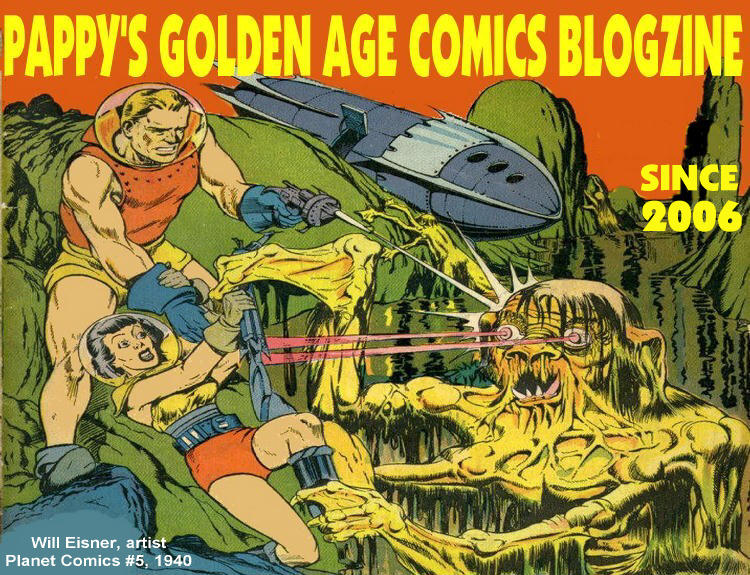The Avenger from ME was a Code-approved comic. I think it was intended to replace the Ghost Rider, which the publisher knew could not get Code approval in those strictly censorious days of the mid-fifties. ME also published a second hero, Strong Man, who was not as colorful as the red-clad Avenger, but lasted exactly as long, four issues.
The Avenger, first issue drawn by Dick Ayers, subsequent issues drawn by Bob Powell, was an attempt to revive the superhero genre. The Avenger was not “super,” but like Batman was a rich guy who set out to fight evil.. The Avenger was probably a couple of years too early, and then his name was co-opted for the Marvel gang now burning up movie screens worldwide.
From The Avenger #2 (1955):
More Avenger, this time by Dick Ayers. Just click on the thumbnail.




























































